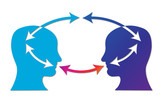Another Look at Safety

At the end of the previous post, I described couples therapists with these words: “We are the guardians of safety within the therapeutic system…. We hold the healing frame….” This blog has addressed the issue of therapeutic safety numerous times, but we cannot be reminded too often to take another look at safety. Many of […]
Exposing the Healing Power of Co...

In the previous post, we looked at the patterns of couples’ interactions that we most commonly see when the partners are in conflict. Now we turn to how we address their patterns therapeutically. In Neurodynamic Couples Therapy, our treatment is not focused on directly resolving their conflicts. In fact, tolerating the unresolved state of the conflicts […]
Understanding Couples Patterns

Anyone who has done couple therapy is familiar with the patterns of behavior that partners demonstrate with each other from the moment we meet them. Some of these patterns can be pleasurable and functional, but those are not the ones that lead couples to seek treatment. We identify them as patterns because they are repeated […]
Managing Our Own Fixing Fantasie...

Most of us who become psychotherapists want to help people feel better, so we are primed to want to fix their problems as quickly as possible. It is reasonable that couples come to us wanting to feel better as quickly as possible. Most of them want to keep their relationships, although they are often afraid […]
Exploring the Fixing Fantasy

In the late 1980’s, a film entitled Look Who’s Talking came out in which Bruce Willis gave voice to the inner thoughts and feelings of an infant. I will never forget one scene in that movie, because of its eloquent demonstration of a piece of human development. The baby’s mother is leaning over his crib, with the […]
The Art of Accompanying

A few years ago, the University of Denver administration conducted interviews with corporate CEO’s and upper level management within the government to determine what their students should be learning in order to be attractive in the current job market. The consistent answers were the ability to work in teams and good EQ. Interesting that the art […]
Motivating the Therapist

It has been said almost too many times that treating couples is very hard work. But, so what. Most couple therapists aren’t afraid of hard work. What they don’t like is working too hard and feeling like they are getting nowhere. It is very difficult to stay motivated that way. I know that therapists are […]
Motivating Couples to Stay in Tr...

The theoretical foundations, structure and techniques of Neurodynamic Couples Therapy provide built-in motivators that enhance a couple’s desire to stay in treatment. Those primary motivators are hope, respect and mutual understanding. Most people who seek mental health treatment are experiencing some level of hopelessness, so it logically follows that all good treatment should provide hope for improvement. […]
Exploring the Wish to Flee

Fleeing treatment is an understandable wish. Effective Neurodynamic Couples Therapy is often frightening and painful–sometimes horribly painful. Metabolizing historical feelings requires that they be relived precisely as intensely as they were originally experienced when first stored, along with the perceived sense of danger that was present in the original experience. It makes sense to be […]
Sticking With It–Part 2

There is no doubt that treating couples is often quite difficult. This is a primary reason that many therapists decide to not treat couples at all. In fact, statistics say that the rate of failure for couple therapy is higher than for individual therapy. Sticking with couple therapy requires knowing how to deal with moments […]
